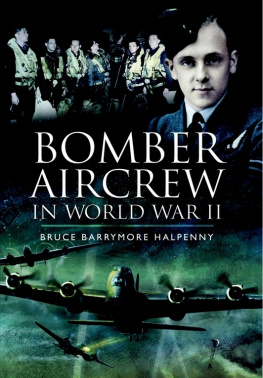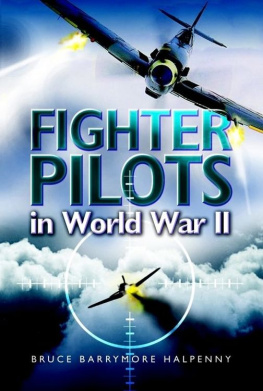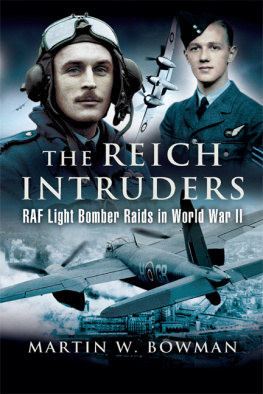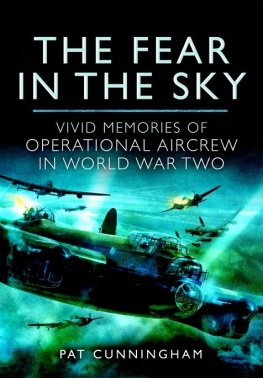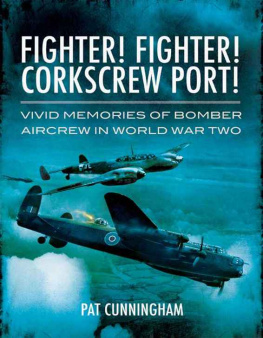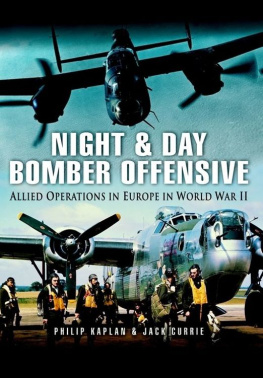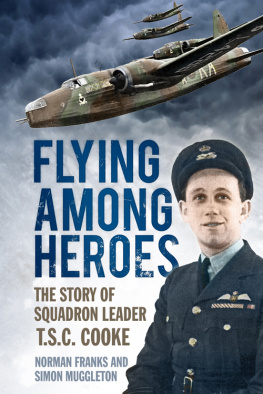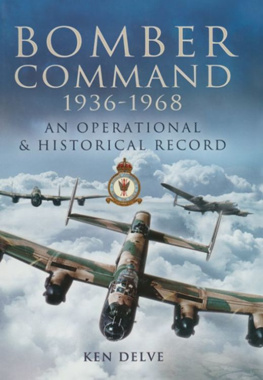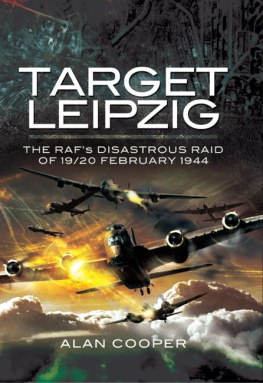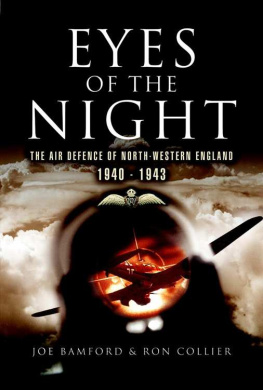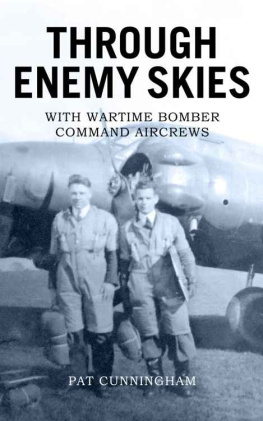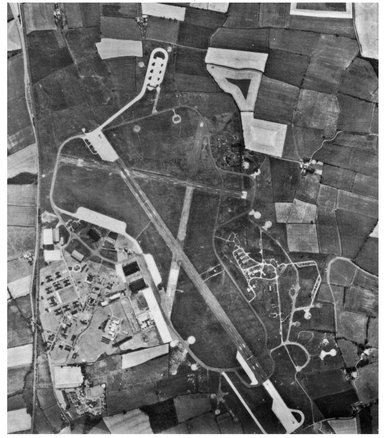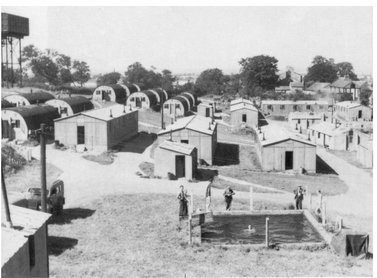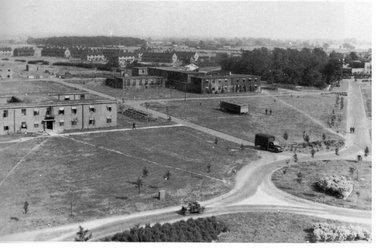Acknowledgements
It is not possible to mention by name all the many people who have helped me with the loan of letters, flying log-books, diaries, photographs and other material for my many books. This book came about with the overflow of material and from the response of my other books. I decided that the best of the stories should be published as a sincere tribute to the men who served on the wartime bomber stations. My grateful thanks to all those who have helped me. My special thanks to Philip Moyes of MacDonald & Janes for the extract of the Airmen of RAF Bomber Squadrons who were awarded the Victoria Cross in the book Bomber Squadrons of the RAF and their aircraft.
The author would also like to thank the Controller of HM Stationery Office for granting permission to reproduce in full from issues of The London Gazette, the Victoria Cross citations which appear in Part Three.
For the factual accounts and many of the photographs I wish to thank Andy Andrew, Doug Bancroft, Ron Buck, Alan Cuthbertson, A.F. Dales, Ralph Dargue, Henry Drozdz, Jack Dunn, Les Fuller, Henry Van Geffen, Jack Halstead, Gilbert Haworth, R.G. Hutton, Jack Lazenby, Mrs Levy, the sister of Sergeant Henry Conrad for the last letter, Arthur Palmer, Reg Payne, Bill Perry, Gordon Ritchie, Reg Stidolph, Ken Wallis, Tom Wardle, Richard Whiting.
I also wish to thank Ken Border for his valued help with research and material for the chapter on the Development of the Bomber Airfield; my long-time friend Ted Evans for his valued support a very loyal friend who was there when I needed him during my recent illness; Dr Paris, Sliema, Malta, for his medical care and friendship, making it possible for me to write this book; Charles E Whitmore, Hantsport, Nova Scotia, Canada; Brian Forway who accompanied me to London and helped with the research at MOD (AHB); my good friend Neville Franklin for some of the bomb photographs; E. Hine from the Department of Photographs, Imperial War Museum; George Hubbert who gave me crash information relating to the Ken Wallis story; Berny Kennedy for the poem Bomber Command War Theme ; Honourable J. Gilles Lamontagne (Ex 425 Squadron RCAF) Minister of National Defence, Ottawa, Canada for his help with photographs; Air Commodore H.A. Probert MBE, MA, RAF (Rtd), Head of Air Historical Branch (RAF) and the staff at AHB; Nick Roberts for drawing the map; my good friend Margaret Morris for typing sections of the book; and a mention also for my son Baron whose smile and enthusiasm gave me the idea for this book. Im sorry I could not use the pictures that he did for the book. Again my very special thanks for all who loaned me material and donated photographs, with apologies to any that I might have forgotten.
The author would be interested to receive any photographs or other material for incorporation in any future publications.
CHAPTER ONE
Development of the Bomber Airfield
The earliest military aerodromes in the United Kingdom were little more than areas of rough grassland, mainly in the vicinity of the Army garrisons at Aldershot and on Salisbury Plain. Tents provided accommodation for the men and wood-framed canvas shelters were erected although they appear to have been almost as flimsy as the aeroplanes that they were intended to protect. By the time World War I started in 1914 several aerodromes had received aeroplane sheds of wooden construction, rather like oversized garden sheds, plus some hutted accommodation.
The war caused an enormous expansion in the aviation services and many new aerodromes had to be opened to train pilots and observers for the new squadrons. Initially these were little different in layout from the pre-war aerodromes but soon a fairly standardised training aerodrome evolved. A completely new type of hangar was designed, the Aeroplane Shed RFC 1915 pattern, made mainly of wood with a curved roof and six large sliding doors at each end and a couple of years later this was superseded by an improved design, the Aeroplane Shed, General Service, 1917 RFC pattern. Similar in outline, this had brick walls with external buttresses and curved roof supported by elaborate wooden Belfast trusses which provided the GS Shed with its popular name the Belfast Hangar.
Hampden bombers at Waddington in 1939 just before the outbreak of World War II.
Wartime triangular pattern of a bomber airfield with three intersecting runways. The main one was usually 2,000 yds in length with the two subsidiaries being 1,400 yds each.
Most of the training aerodromes had seven hangars of either the 1915 or 1917 pattern, six in three pairs as the squadron hangars and the seventh as the aeroplane repair shed for all units. At the edge of the aerodrome, which was often undulating to assist with drainage, were these hangars, rows of huts used as workshops, barracks, etc. They were usually adjacent to a road and were sometimes provided with a siding from a convenient railway line.
Concrete pill-boxes, housing machine-guns and crews, were erected at RAF bomber stations as part of the airfield defences.
Soon after the end of the war the armed forces began to contract to their peacetime establishment and most of the aerodromes were abandoned. A few were retained and these were the bomber airfields of the 1920s with a very gradual programme of building replacement starting towards the end of the decade.
In 1924 a new type of hangar was designed for the Royal Air Force and eventually over 30 were built on airfields in various parts of England. This was the type A hangar and was steel framed with brick walls, the vertical girders being outside the walls, and the multi-gabled roof was covered with toughened asbestos sheets. Other aerodrome buildings were designed around this time, particularly barrack blocks and messes, grim looking red brick buildings but nevertheless providing far better facilities than the worn out old temporary huts that they replaced. Early in the 1930s a modest expansion programme was approved for the Royal Air Force and one or two new bomber aerodromes were constructed. One of these was Mildenhall and here the first buildings to be completed were in accordance with these drawings dating back to the previous decade, including a pair of A hangars.
On the left, the familiar water tower that dominates this group of buildings. The round-roofed Nissen huts are living huts, the other huts are the ablutions. These are at Skipton-on-Swale and photographed August 1945, and were the general layout for living quarters.
The well planned-roads and pathways characterise the permanent station. The permanent two-storey buildings were used for billets and administration. Photograph taken at RCAF Station Leeming in August 1945.

